The rain can be a daunting obstacle when it comes to pitching a tent – but it doesn’t have to be! With the right preparation and knowledge, you can successfully pitch your tent in the rain with ease. This guide will provide you with all the information and helpful tips you need so that you can enjoy a summer camping trip even when Mother Nature throws curveballs!
How to Pitch a Tent in the Rain Without Getting Wet
Pitching a tent in the rain can be tricky, but it’s not impossible. You just need to know what to do and how to prepare for it. Here are some tips that will help to pitch the tent in the rain without getting wet:
- Find a flat, level spot sheltered from the wind and rain if possible. This is important because it helps keep your tent dry when pitching it and while using it.
- Ensure your tent has been waterproofed properly before heading out camping in the rain. All tents come with instructions as to how best to care for them and make them waterproof; follow these steps carefully!
- Have an extra tarp or plastic sheeting handy so that you can cover the ground where you’ll be pitching your tent. By doing this, you’ll create an extra layer of protection for the tent and its contents from the rain.
- Assemble your tent while it’s still dry; don’t try to do it in the rain because that will just make things more difficult for you. Make sure all poles are clipped together properly and in the right order before attempting to set up the tent in the rain.
- If need be, enlist a friend or camping buddy to help hold up one side of the tent while you attach stakes and guy lines on the other side. This will ensure that everything is kept tight and secure against any gusts of wind.
- Make sure all stakes and guylines are firmly attached to the ground, as this will keep the tent from toppling over in case of strong winds or heavy rain.
- Once you’ve pitched your tent and it’s secured with stakes and guy lines, add a few extra layers of protection by draping an extra tarp over the top of the tent for additional coverage.
With these tips, you’ll be able to enjoy camping in inclement weather without worrying about getting wet or having your equipment ruined. Just remember to take some extra precautions before heading out and stay safe during your trip!
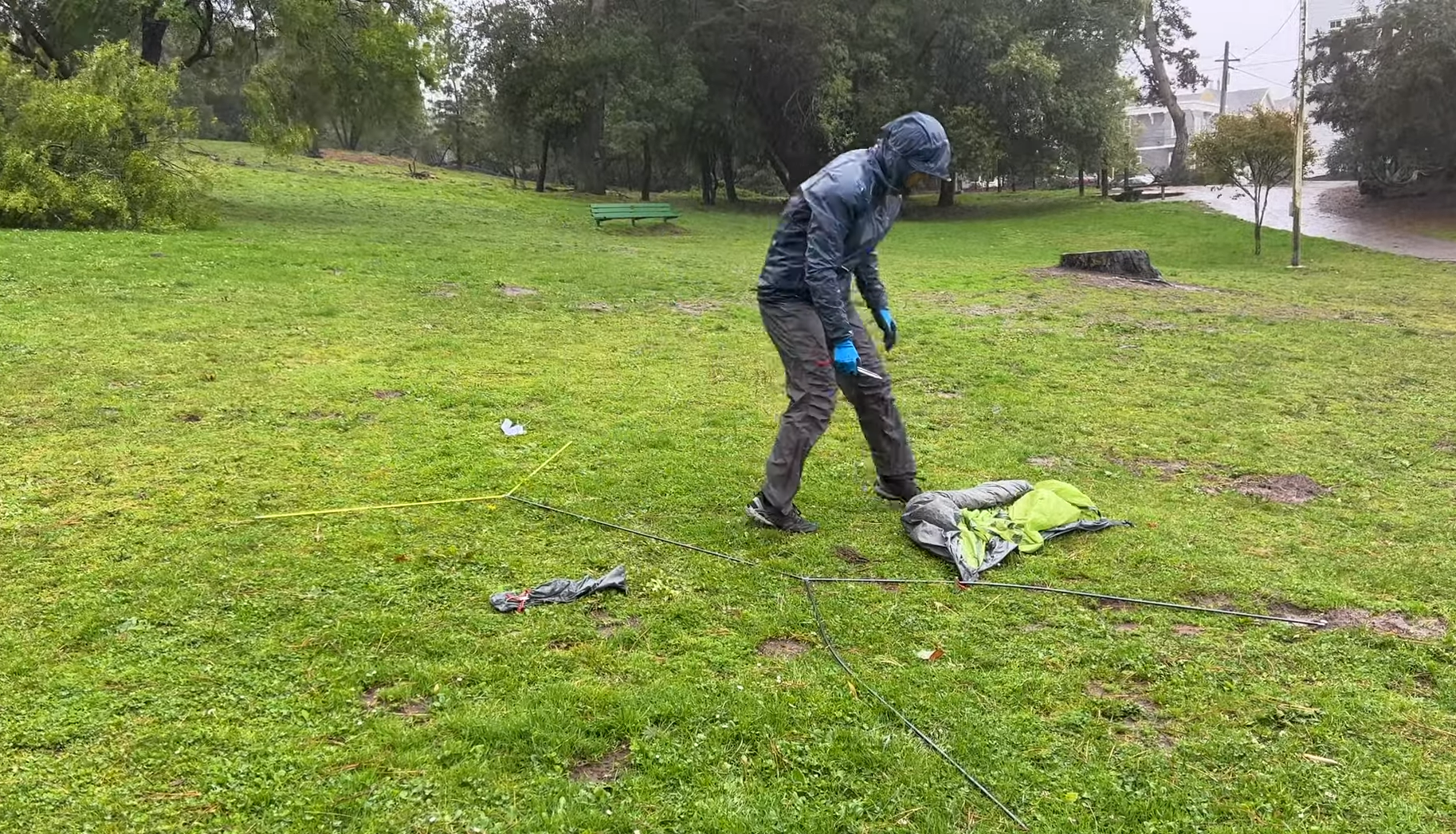
Minimize Wetness
Wetness can be a serious issue when camping in the rain. You’ll need to protect your tent and gear from getting wet. First of all, set up your tent in an area that is not prone to flooding or standing water. Ensure there’s no chance of any water entering the tent from below. Then, invest in waterproofing spray or an impregnating sealer for your tent fabric and seams. It will help to minimize moisture penetration and keep you dry inside even if outside is pouring rain!
Finally, take some time to get familiar with the drainage system around your campsite. Look for any natural slopes that could divert water away from your tent and ensure you don’t set up too close to puddles or other sources of standing water. This should help minimize wetness inside your tent when camping in the rain!
Pack Tent Parts Separately
Make sure each piece is inside a waterproof bag. Keep the poles, stakes and groundsheet together in one bag. This will make it easier for you to transport everything as well as keep it dry.
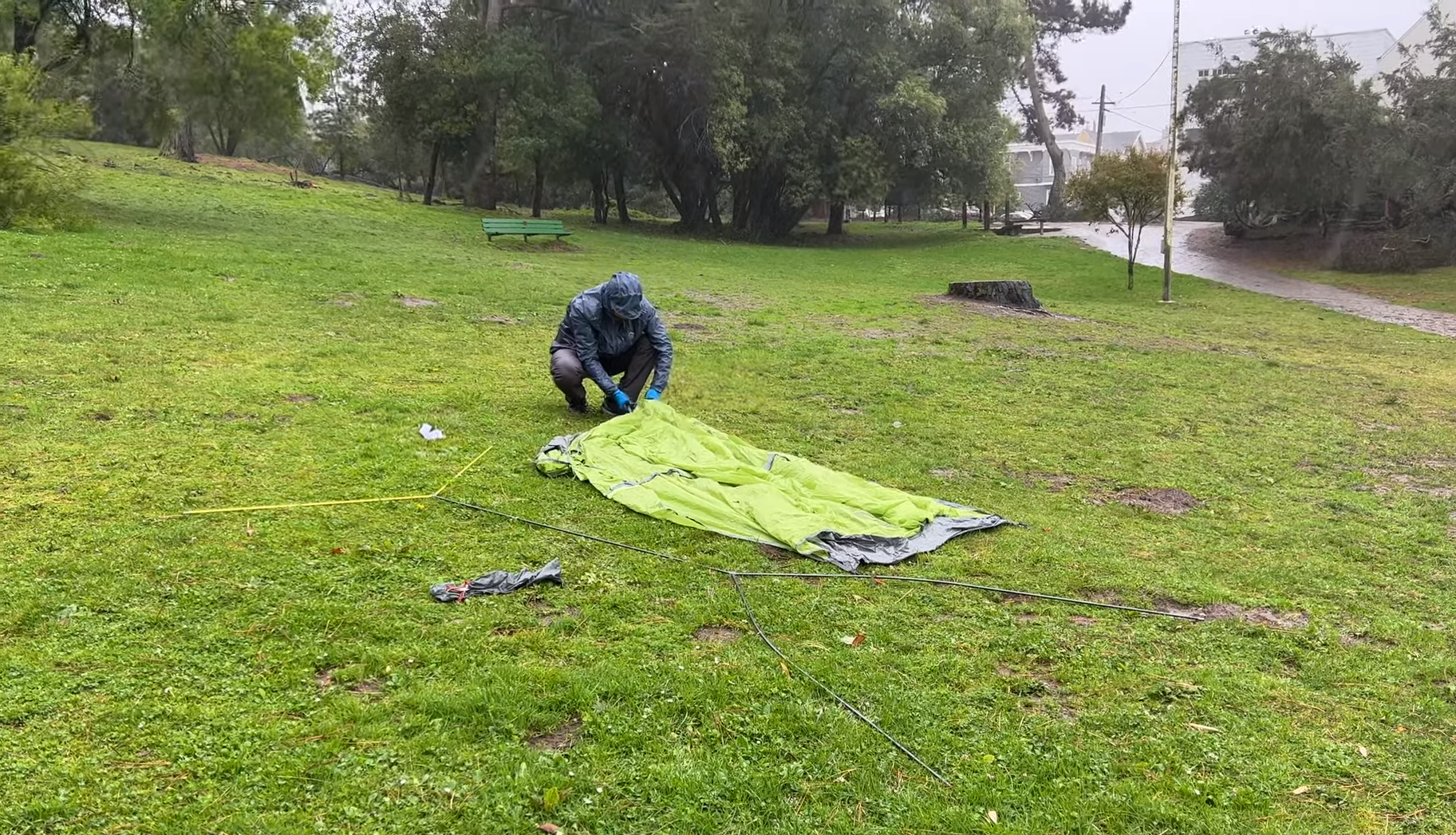
Make Sure Fly Is Rolled with the Exterior Outwards
This will help prevent water from seeping into the interior of your tent or sleeping area. If you roll it up incorrectly, then any water that gets inside your tent will be forced to flow back outside before it can get to you.
Shake Off the Inner Tent before Putting the Fly On
To do this, simply shake it off and ensure that no water droplets are caught in the material. If any moisture is left behind, take a cloth or towel and wipe down the interior of your tent so it can dry completely. This will keep the tent dry even if there is some rain outside.
Keep Tent Doors Zipped
Once you have the tent pitched, it is essential to keep all doors and windows securely zipped as much as possible. This will protect the inside of the tent from rainwater coming in through any openings, which can quickly cause an uncomfortable mess. Before you enter or exit the tent, ensure you zip everything back up afterwards.
Bring a Rain Towel
Bringing a rain towel or extra shelter to place around the perimeter of your tent is essential for keeping out moisture. When you arrive at your campsite, lay down the rain towel or extra shelter before pitching the tent for keeping any water that might be seeping in from underneath away from the inside of your tent. If possible, try to find a spot sheltered by trees or other vegetation so that you can reduce the amount of rain that comes into contact with your tent.
Practice
The best way to get familiar with pitching a tent in the rain is to practice. Practice as much as you can, including setting it up and taking it down again. This will help you become more comfortable and confident if you ever have to do it during an actual camping trip. It’s also important to check that all of the seams are sealed on your tent before each use so you don’t have any water coming inside! If necessary, take extra time to seal them with seam sealer or waterproof tape. Additionally, ensure all parts of the tent (stakes, poles, fabric) are clean and dry before packing away for storage after every use. Doing this will keep your tent in good condition for years to come.

Choose a Single Wall Tent
This type of tent is better at keeping out moisture than a double-walled tent. Single wall tents tend to be lighter and more breathable, so they won’t trap moisture as easily. Look for one made from waterproof fabrics that can also breathe and allow air circulation. Additionally, look for features like taped seams and waterproof coatings on all zippers and fabric panels to keep moisture from seeping through any cracks or openings.
Wait for the Weather to Get Better
This is the simplest and most effective solution. If you’re currently camping in a rainstorm, just wait it out until the weather gets better. This may mean waiting for many hours or even days, but it’s the best way to ensure that your tent will stay dry no matter what.
Use a Tarp Rain Shelter
When pitching a tent in the rain, one essential item to have is a tarp or plastic sheet that can act as a shelter. A tarp shelter should be big enough to cover the entire area you will use for your campsite, but not so large that it takes up a lot of space. Position the tarp over an area with soft ground and peg it down at least four corners. This will help keep any potential water out of your camping site and give you some place dry to set up the tent. If needed, position poles around the outside edges of your tarp in order to provide extra support and protection from wind gusts or heavy rain. You can seal off gaps with extra blankets or tarps to keep wind and water out.
Use the Fly First Method
When it’s time to pitch a tent in the rain, you want to ensure that everything is done quickly and correctly. One of the best ways to do this is by using the Fly First Method. This method involves setting up the tent fly first to provide a canopy over your space while you work on setting up the rest of your tent.
First, find an area that is relatively flat and free from standing water or flooding potential. You’ll want a spot free from obstacles like tree roots or rocks where you can create a level surface for your tent. Once you’ve found a suitable spot, unroll your fly onto this area and use stakes to secure it into place.
Next, position the poles so that the fly is taut and doesn’t sag. Ensure that the door of your tent is facing away from any prevailing winds, as this will help reduce wind-induced condensation inside your tent. It’s also important to ensure that all water runoff, such as rainwater or snowmelt, is directed away from the opening of the tent to prevent flooding.
Finally, attach the poles to your tent body and secure it into place with stakes. Ensure that everything is securely fastened so that it won’t be blown away should you experience severe weather. This is especially important if you plan on camping in areas known for strong gusts of wind or heavy downpours.
Even if it’s your first time doing so, by taking the necessary steps outlined above you’ll be sure to have a successful camping experience. So don’t let a little bit of wet weather stop you from exploring the great outdoors!
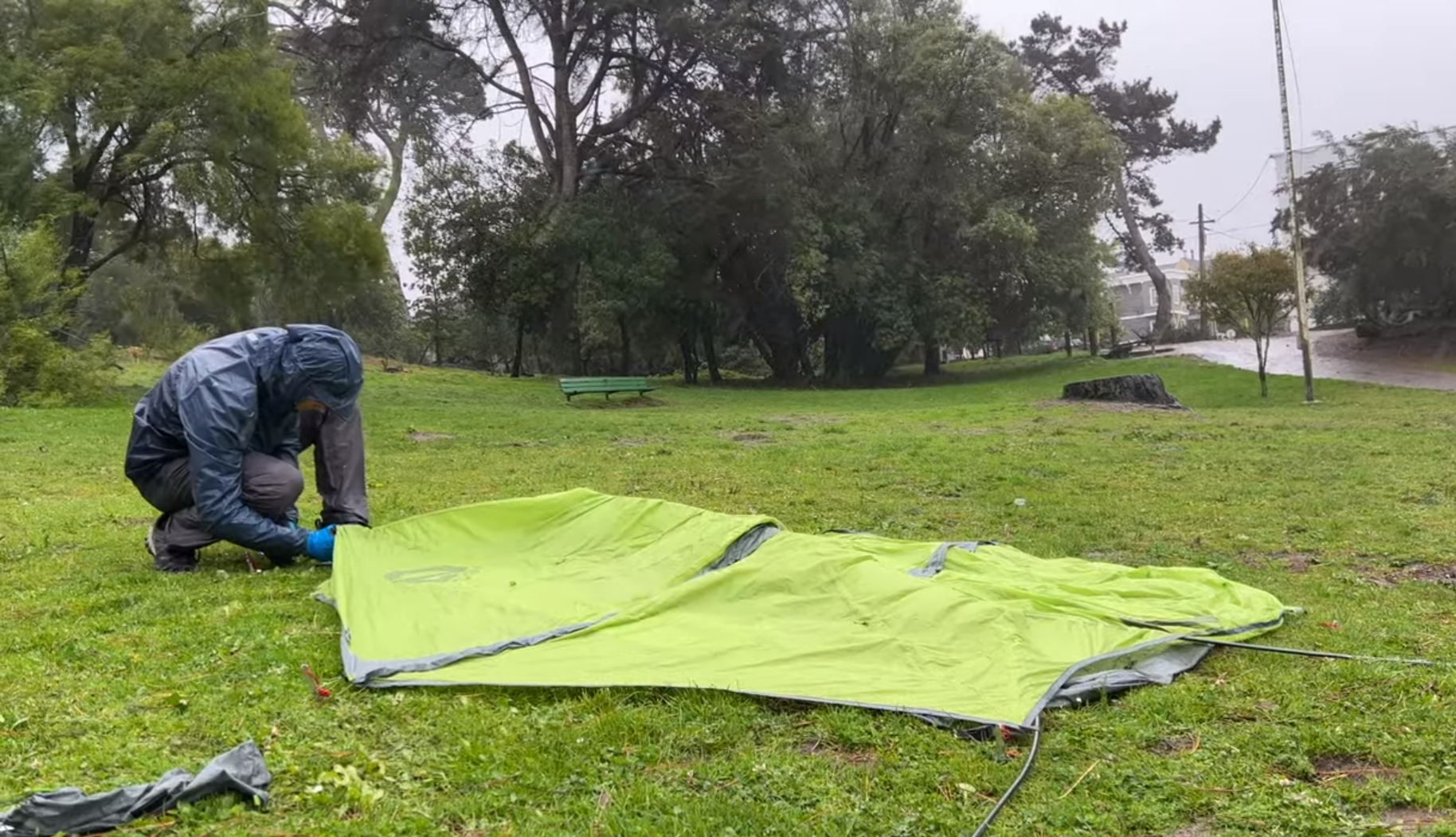
Choose a Tent with Exterior Poles
Choose a tent with exterior poles. These are called exostructure poles and they make it much easier to set up a tent in wet weather by allowing you to set up from the outside. This means that you don’t have to go inside the tent while wet, which can cause damage and make it harder for air to circulate. Additionally, many tents with exostructure poles are designed to be waterproof or water-resistant.
Wear Rain Gear
The wisest way to go about pitching a tent in the rain is by wearing the right gear. It goes without saying that you should wear something waterproof and breathable. This could be anything from a raincoat to a poncho or any combination of both. Make sure whatever you are wearing covers your head and arms completely because these are areas that get wet easily. You want to stay as dry as possible while you’re setting up your tent. Additionally, it might be helpful to wear some kind of gloves for extra protection against the elements. The last thing you need is for your hands to feel cold and clammy when trying to set up camp!
Finally, don’t forget a tarp or groundsheet for extra protection against the damp ground. The last thing you want is for all of your gear to get soaked before you even have time to put up your tent! Covering the ground with a tarp will help keep things dry until you can set up camp properly. [1]
Following these simple steps will help ensure that pitching your tent in the rain doesn’t become a stressful experience. And if it does, just remember to stay calm and take your time. With the right gear, plenty of patience and a little bit of luck, you’ll have your tent up in no time!
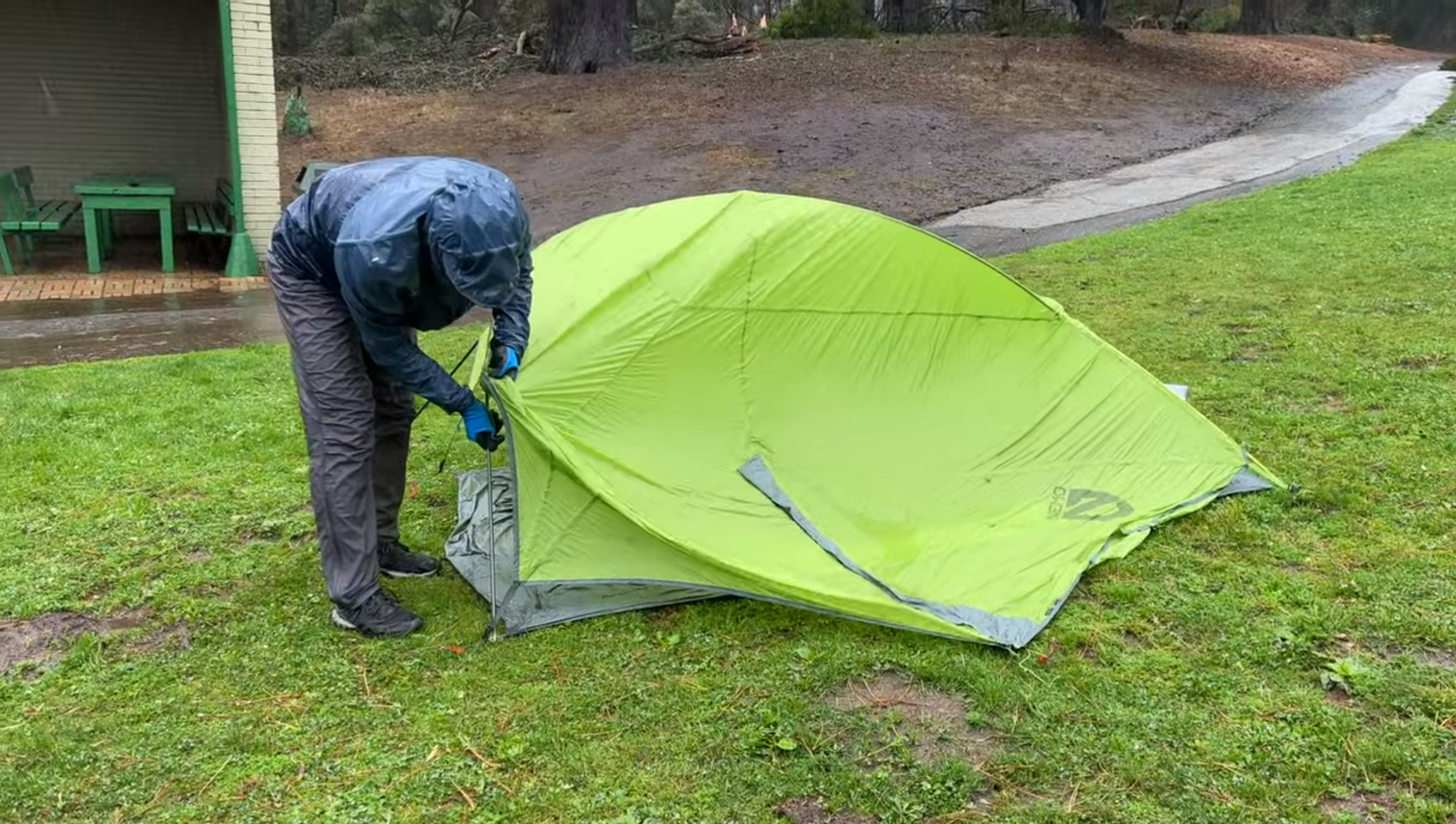
Additional Tips
- Make sure to use extra guy lines or stakes when setting up your tent in the rain. This will help keep it secure and stable even in strong winds.
- The rain fly should be set up first, as this is the most important part of keeping you dry inside your tent. Be sure to check that all seams are sealed against water penetration and that the material has been treated with a waterproofing spray or wax.
- Look for places on higher ground when pitching your tent, as this will reduce the chances of flooding and pooling water from heavy rains. It’s also a good idea to create small trenches around the area where you’ll be pitching your tent to divert runoff water away from your tent.
- If you have to pitch your tent on a wet surface, be sure to use some kind of groundsheet or tarp underneath it. This will help keep the moisture away from the underside of your tent and reduce the chances of leaks and condensation building up inside.
- Don’t forget about ventilation when pitching your tent in the rain! Make sure there are openings at both ends of the tent to allow for air circulation and reduce condensation buildup inside.
- Finally, it’s important to make sure everything is packed away properly after taking down your tent. Wet tents can quickly develop mold and mildew if they aren’t dried out before being stored away for a long period of time.
By following these tips, you can ensure that your tent is properly set up and ready to keep you dry even in the worst rainstorms! With the right preparation and careful consideration, there’s no reason why pitching a tent in the rain has to be a stressful experience.
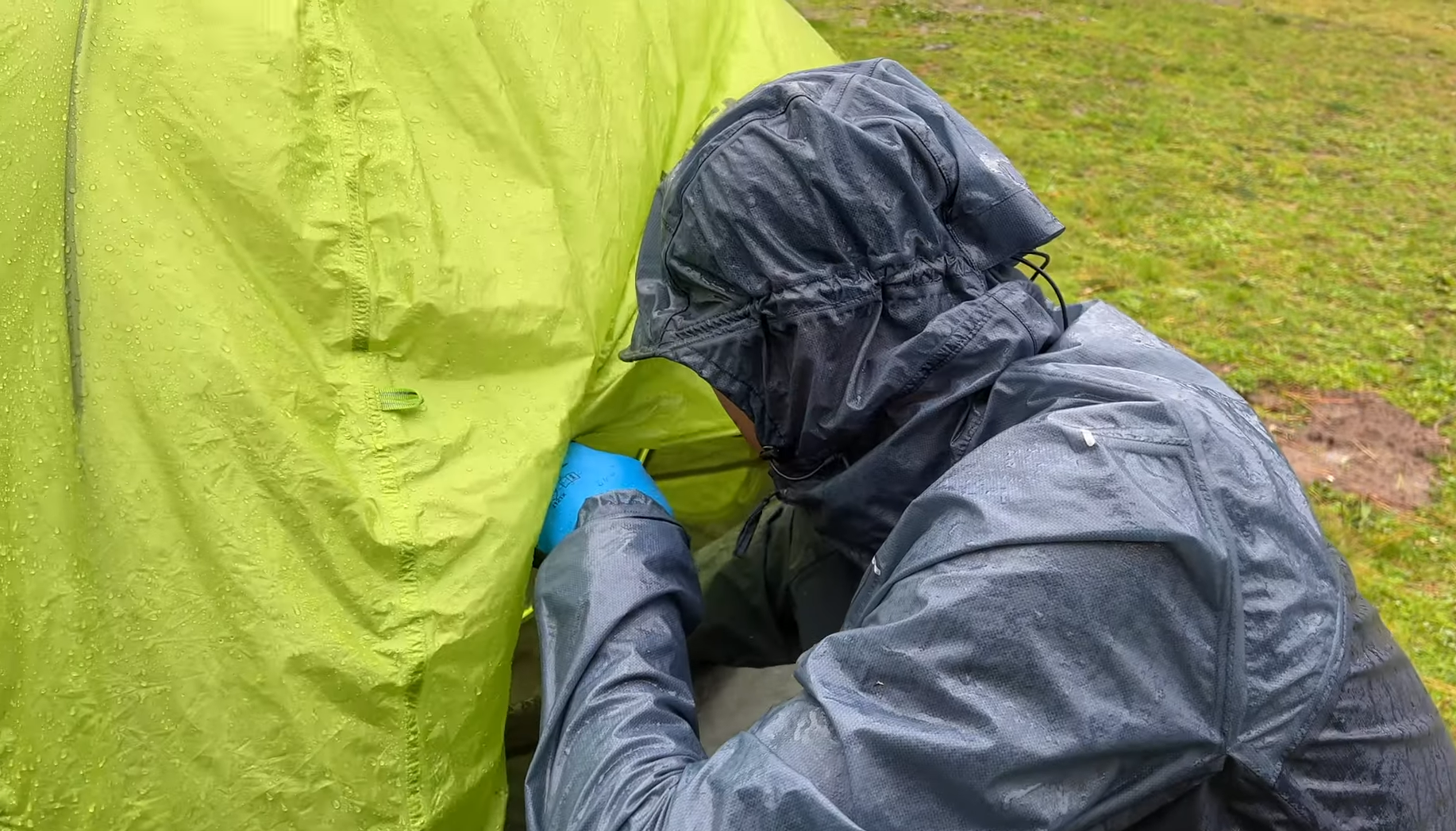
FAQ
How do you pitch a tent when it’s raining?
Pitching a tent when it’s raining can be tricky, but with the right preparation and some practice, it can be done. The first step is to pick a spot that has good drainage. A level area that is elevated or on higher ground will help keep your tent dry. Make sure there are no standing pools of water where your tent could get flooded if it rains heavily.
Once you’ve found the perfect spot for your tent, remove any rocks or sticks that could puncture the fabric. If possible, lay down a tarp in order to provide an extra layer of protection from the ground and rain. This also helps to keep moisture off of your gear as you set up the tent.
Next, unpack your tent and set it up according to the instructions. Be sure to assemble your tent correctly in order to keep rain out and make sure all seams are sealed properly with waterproof sealant if necessary. Make sure that the door is facing away from strong winds or gusts of rain.
Once everything is set up, stake down the corners using stakes that are long enough for the ground type you’re dealing with. This will help keep your tent secure during heavy weather conditions. For extra protection, you can also put rocks or logs on top of the stakes to weigh them down further. [2]
And finally, be prepared for a wet night! Bring along extra blankets or sleeping bags so that you stay dry and warm inside your tent, and always remember to pack extra clothes and supplies in case you need them during the night. With these steps, pitching a tent successfully in the rain is possible!
Can you put a tent down in the rain?
Yes, you can! With the right preparation and knowledge, you can easily set up your tent in the rain. Of course, doing so will involve getting a bit wet — but that’s part of the fun! Here are some tips to help ensure you have a successful experience pitching your tent in rainy weather:
- Choose an appropriate location. When selecting your campsite, do your best to find a spot that is sheltered from the wind and out of any low-lying areas that might flood during heavy rainfall. If possible, try to avoid areas with tall trees as these could be more prone to lightning strikes or falling branches when it storms. Also, select an area with good drainage so water won’t pool around your tent.
- Put down a groundsheet. A groundsheet is an essential piece of gear for setting up a tent in the rain — it will help keep the bottom of your tent dry and protect it from mud and dampness. Make sure to choose one that will fit the size and shape of your tent and secure it firmly with pegs or sandbags.
- Use a tarpaulin as a shelter. If you find yourself camping in particularly wet conditions, consider using a tarpaulin to provide some additional protection for your tent setup. You can tie the edges of the tarpaulin to nearby trees or drape it over your tent’s poles to create an impromptu shelter from the rain.
- Put up your tent quickly and efficiently. Once you have chosen your location and laid down your groundsheet, it’s time to set up the actual tent! The key here is to work as quickly as possible — this will help ensure that you don’t get too wet in the process. If possible, ask a friend for some extra hands when erecting the poles of larger tents.
- Ventilate after pitching your tent. After setting up your tent, take the time to properly ventilate it so humidity can escape and air can circulate more freely inside the shelter. You can do this by opening any vents or windows included in the design of your specific model of the tent. [3]
Are tents waterproof in the rain?
Yes, most tents are waterproof in the rain. Modern camping tents usually come with a waterproof coating that can protect against the elements and keep you dry inside. However, it’s important to note that this coating needs to be regularly maintained in order for it to be effective; otherwise, water can seep through and cause your tent to become wet inside. Make sure you read up on how often your particular tent needs its waterproofing re-applied so you can ensure it is ready when you need it most! [4]
How long can a tent stay wet?
When pitching your tent in the rain, you should consider how long it can remain wet. Depending on the type of material that your tent is made from, it may be able to withstand a certain amount of time before drying out and being ready for use again. Generally speaking, tents made from nylon or polyester are the most waterproof and can usually handle up to 48 hours without drying out completely. If your tent is made from canvas or other fabrics, then it won’t be as water-resistant and will need to dry out much faster than those materials. Keep this in mind when deciding how long it will take to pitch your tent in the rain! [5]
Useful Video: How to pitch a double wall tent in the rain (and keep it dry)
Conclusion
With a little bit of know-how and the right gear, pitching a tent in the rain doesn’t have to be a daunting task. Taking proper precautions and following some simple steps can help ensure that you stay dry and comfortable. It’s important to remember to keep your equipment well maintained and to always read up on any safety instructions before attempting anything new outdoors. So don’t let a little bit of rain stop you from enjoying nature – go out and make sure your camping trip is one to remember!
References:
- https://momgoescamping.com/pitch-tent-in-rain-inside-doesnt-get-wet/
- https://thebigoutside.com/how-to-pitch-a-tent-in-rain-and-keep-it-dry/
- https://outdoorishome.com/take-down-a-tent-in-the-rain/
- https://tentcampingtrips.com/are-tents-waterproof/
- https://www.ukcampsite.co.uk/chatter/display_topic_threads.asp?ForumID=3&TopicID=198507&ThreadPage=1

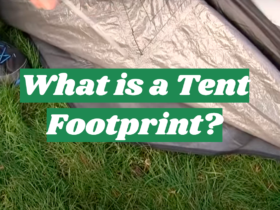



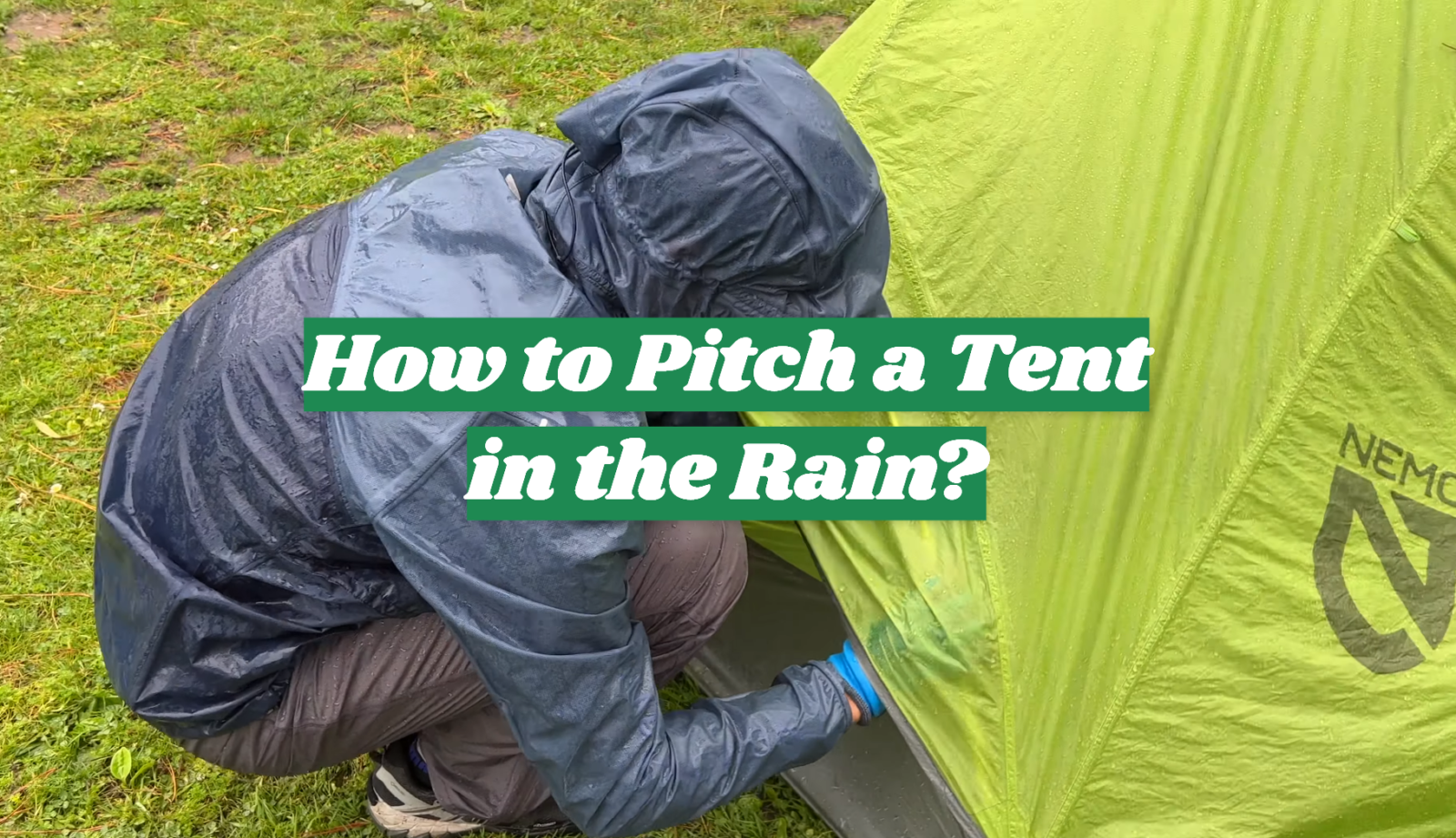

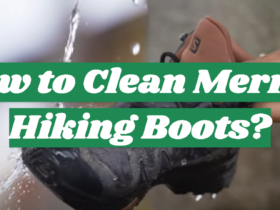

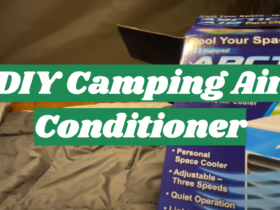
Leave a Review